Always Here for You.
Lighting Warehouse offers direct support to customers. We always have your back.
SHOP BY LW BRAND
SHOP CATALOG
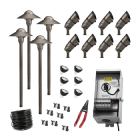 Easy-Install Kits
Easy-Install Kits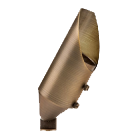 Uplights
Uplights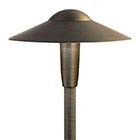 Path & Walkway Lights
Path & Walkway Lights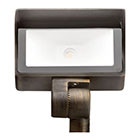 Flood & Wall Wash Lights
Flood & Wall Wash Lights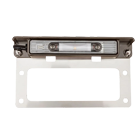 Hardscape Lights
Hardscape Lights Step Lights
Step Lights Outdoor Deck Lights
Outdoor Deck Lights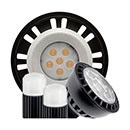 Outdoor Bulbs
Outdoor Bulbs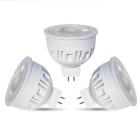 RGBW Color Lights
RGBW Color Lights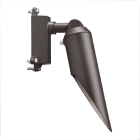 Downlights
Downlights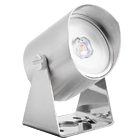 Underwater Lights
Underwater Lights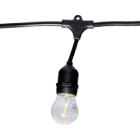 Bistro String Lights
Bistro String Lights Holiday Decorations
Holiday Decorations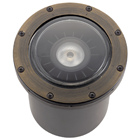 In-Ground Well Lights
In-Ground Well Lights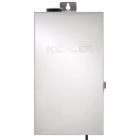 Transformers
Transformers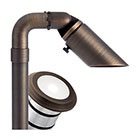 Accessories
Accessories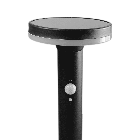 Solar Lights & Portables
Solar Lights & Portables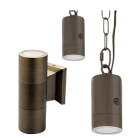 Specialty Lights
Specialty Lights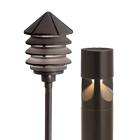 Bollard Lights
Bollard Lights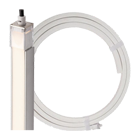 Tape Lights
Tape Lights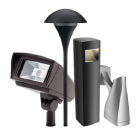 120V Landscape Lighting
120V Landscape Lighting Dark Sky Approved Lights
Dark Sky Approved Lights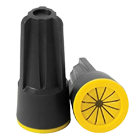 Connectors
Connectors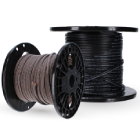 Wire & Cable
Wire & Cable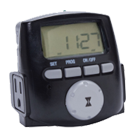 Timers & Control Devices
Timers & Control DevicesAlways Here for You.
Lighting Warehouse offers direct support to customers. We always have your back.
Save More When You Become a Customer!
Lighting Warehouse offers support to customers at home.


November 12, 2024
Table of Contents: What is a Low Voltage Transformer?
Using a low-voltage transformer for outdoor lighting can turn your outdoor spaces into enchanting retreats, whether you’re looking to highlight a stunning garden, add a warm glow to your patio gatherings, or boost security around your home. At the heart of this transformation is the low-voltage transformer—a vital piece of the puzzle that ensures your lighting system works its magic safely and efficiently.
In this guide, we’ll dive into everything you need to know about low-voltage transformers for outdoor lighting. We’ll explain what they are, how they operate, and why they’re crucial for crafting a beautiful, energy-efficient, and safe lighting setup that brings your outdoor spaces to life.
Whether you’re a DIY enthusiast or just looking to understand more about your landscape lighting, we’ve got you covered.
A low-voltage lighting transformer is an electrical device that converts the standard 120-volt electrical current from your home’s power supply into a lower, safer voltage—typically 12 volts or 24 volts. This lower voltage is ideal for outdoor lighting systems because it’s much safer to use around people, pets, and plants, especially in wet or moist environments such as gardens and lawns.
Low-voltage transformers are critical because most landscape lighting fixtures, such as path lights, spotlights, and deck lights, are designed to operate on low voltage. These transformers allow your lighting system to function efficiently without the need for complex electrical setups or high-risk installations.
The basic function of a low voltage transformer is to “step down” the higher household voltage to the lower voltage required for outdoor lighting. Here’s a simplified breakdown of how the process works:
Some transformers also have built-in timers, photocells (light sensors), and dimmers that allow you to control when the lights turn on or off, or adjust their brightness based on the time of day or ambient light conditions.
There are several types of low voltage transformers, each suited for different landscape lighting needs. Here’s an overview of the most common options:
Magnetic transformers are traditional and robust. They use magnetic fields generated by coils of wire to step down the voltage. These transformers are known for their durability and reliability, often lasting for many years with minimal maintenance.
Magnetic transformers are known for their high durability and ability to handle larger loads, making them ideal for larger landscapes with many lights.
However, magnetic transformers tend to be bulkier, heavier, and less energy-efficient compared to electronic transformers.
Electronic transformers are more modern and compact than magnetic transformers. They use electronic circuitry instead of coils to convert voltage. Electronic transformers are lightweight, compact, and more energy-efficient, which makes them ideal for smaller landscape lighting setups.
On the downside, electronic transformers are less durable than magnetic transformers and may not handle heavy loads as effectively.
Smart transformers from brands like Kichler Lighting, can be controlled via smartphone apps or home automation systems. They allow you to customize your lighting system with ease by giving you the power to adjust brightness, set timers, and remotely monitor energy usage.
Nevertheless, smart transformers come at a higher cost and require integration with a WiFi or smart home system.
Selecting the right low-voltage landscaping lighting transformer for your setup depends on several factors. Consider the following when making your decision:
Before choosing a transformer, you need to calculate the total wattage of your landscape lighting system. Add up the wattage of each fixture, and then choose a transformer that can handle at least 20% more than your total wattage to ensure reliable performance.
For example, if your total lighting system draws 150 watts, choose a transformer rated for at least 180-200 watts to avoid overloading the system. We also have a quick guide to watts and amps to help you remember the differences between the two measurements and the roles they play in outdoor lighting.
Most landscape lighting operates on either 12 volts or 24 volts. Choose a transformer that matches the voltage requirements of your fixtures.
A 12-volt low-voltage transformer for outdoor lighting is suitable for most residential landscape lighting systems, while 24-volt systems are typically used in commercial or larger residential applications where longer wire runs or higher brightness is needed.
If your landscape lighting system is small and energy efficiency is a priority, an electronic transformer may be the best choice.
However, for larger setups or systems with many fixtures, a magnetic transformer is more suitable because it can handle heavier loads and provide better long-term durability.
As we mentioned above, many modern transformers come with advanced features such as built-in timers, photocells, and WiFi capabilities. A transformer with a built-in timer or photocell can automatically turn your lights on and off, saving energy and reducing maintenance.
Smart transformers with WiFi capabilities allow you to control your lighting system remotely, giving you the ultimate convenience and customization.
Installing a low voltage transformer for your landscape lighting system is a straightforward process, but it’s important to follow a few basic guidelines to ensure safety and efficiency.
Transformers should be mounted on a sturdy surface, such as a wall or post, near an outdoor electrical outlet. Make sure the location is protected from the elements, but still allows for proper ventilation to prevent overheating.
Using the correct wire gauge for your lighting system is crucial. For longer wire runs, a thicker wire (lower gauge number) is necessary to minimize voltage drop. For example, use 12-gauge or 10-gauge wire for long distances to ensure even illumination.
Once your transformer and lights are connected, test the voltage at each fixture using a voltmeter. Make sure each light is receiving the correct voltage (within 10% of the rated voltage for the fixture) to prevent dim or uneven lighting. For more information, read our guide on how to measure voltage across a resistor with a voltemeter.
All connections between your transformer, wiring, and fixtures should be weatherproof to protect against moisture and corrosion. Use waterproof connectors or gel-filled wire nuts to maintain an efficient waterproof landscape lighting system running smoothly in all weather conditions.
Low-voltage transformers offer several advantages over traditional high-voltage systems in landscape lighting:
Choosing the right low-voltage transformer for outdoor lighting is essential for the long-term success of your system. Whether you’re installing a small garden setup or illuminating a large backyard, the right transformer ensures your lights shine brightly, safely, and efficiently.
Keep in mind the type of transformer, total wattage, voltage, and additional features when you install low-voltage transformers and create the perfect outdoor lighting experience. With proper planning and installation, your low-voltage landscape lighting setup will provide beauty and functionality for years to come.
It’s necessary to have a low-voltage transformer for outdoor lighting because your home has a higher voltage output that would damage your bulbs. When you install low-voltage transformers, you “step down” that voltage to a lower level that bulbs for outdoor lighting can handle with ease. For instance, LED bulbs only need 12 volts to function in any setup, and a transformer can keep your lights on while protecting your home and exterior areas from overloading and other electrical hazards.
The amount of lights on any low-voltage transformer depends on its wattage capacity. Add up the total wattage of all the lights you intend to install. The total should not exceed 80% of the transformer’s capacity due to potential overloads. For example, for six 18-watt lights, you will need a transformer that can support a minimum of 128 watts. For future calculations, use this equation:
(number of watts per fixtures) X (number of lights needed) + 20 (percentage difference per 80% guideline)
When it comes to line-voltage vs. low-voltage systems, you only need to use the former if you plan on incorporating high-powered bulbs and fixtures, such as those for floodlight lights, or if you need more durable units due to the surrounding harsh environments. However, a line-voltage setup requires more costs in the form of a more expensive unit, professional installation, and costly utility bills. Consider your lighting designs and budget before committing to a line-voltage system.
Join our Insider list and check out the different low-voltage transformers that we have to offer.
Sign up for exclusive offers and insight into what’s new for Lighting Warehouse. Elevate your outdoor lighting today!
By inputting your email, you agree to receive recurring promotional emails to which you may unsubscribe at your discretion.
Start Building Your Landscape Lighting System Today at Lighting Warehouse!
Monday - Friday

Speak to us at 855-444-8424